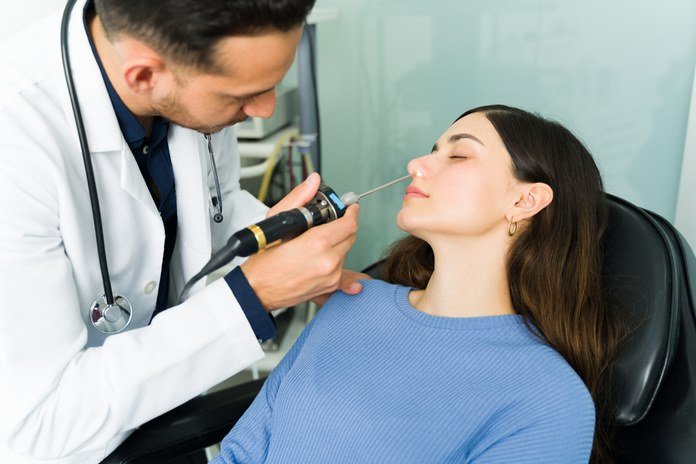Sinusitis (Sinus Infection) Diagnosis

Your healthcare giver will ask you many questions to form a detailed medical history and know about your symptoms. They will also do a complete physical examination. While your exams, your healthcare provider will examine your nose, ears, and throat for any blockage, draining, or swelling. An endoscope (a small optical/lighted instrument) might be useful to check inside the nose. In a few cases, you may be referring to an ear, nose, and throat (ENT) specialist. If you require an imaging examination, your healthcare provider would perform a computed tomography (CT) scan. Sinus infection is most of the time diagnosed based on the examination and history of a patient. (6)
Because simple X-ray studies of sinus infection might be procedures and misleading such as MRI and CT scans that are much more sensitive in the ability to examine a sinus infection are so not available and expensive in most doctor’s offices, most sinus infections are diagnosed initially and treated based on the clinical finding on checkup.
These physical findings might consist of:
- Swelling about the cheeks and eyes
- Swelling and redness of the nasal passages
- Tenderness to tapping (percussion) over the forehead or cheeks region of the sinuses
- And purulent (pus) drainage from your nasal passages (such symptoms is more likely to diagnose clinically a sinus infection)
Typically, nasal secretions are checking for secreted cells that might aid in differentiating between allergic and infectious sinusitis. Infectious sinusitis might reveal specialized infection cells (polymorphonuclear cells) while the allergic sinus infection might reveal specialized white blood cells of allergy (eosinophils). General physicians recommend antibiotics if the bacterial infection is considered. Antibiotics are not efficient against many viral infections; most physicians then cure the symptoms. If sinus infection stops responding to the starting treatment prescribed then in detail studies such as MRI or CT scans might be performed.
Ultrasound has been used to diagnose sinusitis in pregnant ladies but is not as authentic as MRI or CT. Endoscopy or Rhinoscopy, a method for looking in the back direction of the nasal passages with a small flexible fiberoptic tube might be effective to look directly at the sinus openings and look for blockage of such openings by either growths or swelling. It might sometimes be essential to do a needle puncture (needle aspiration) of a sinus to turn infected material to culture to find what microbe is causing the sinus infection. The nasal passages cultures are rarely beneficial in finding what fungus or bacteria is causing sinusitis since the nasal passages are sometimes colonized normally by non-infecting bacteria.
The needle puncture method is normally done by an otolaryngologist when cures have failed to reduce the disease. The method needs local anesthesia to reduce any discomfort, few patients need general anesthesia. The sinus is punctured, the contents get in for staining and culture and the sinus might be removed with a saline solution. Technically, it is the most authentic way to check infectious sinusitis. Fungal infections are normally diagnosed by biopsy methods and tissues removed by microscopic identification and fungal culture by a pathologist or a microbiologist or by a surgeon.
